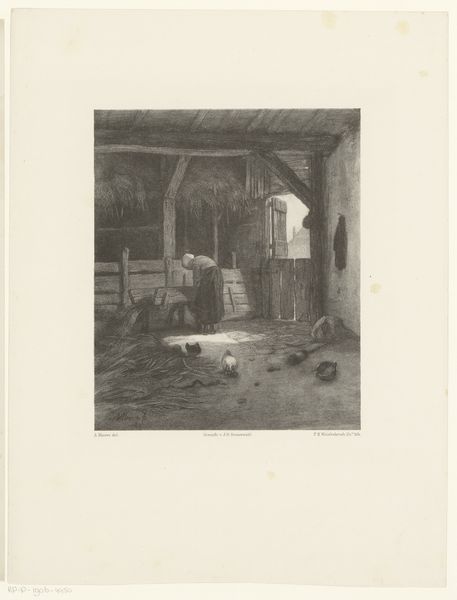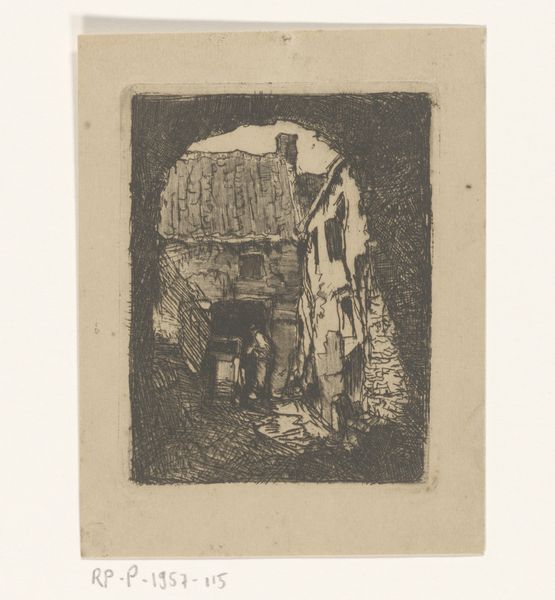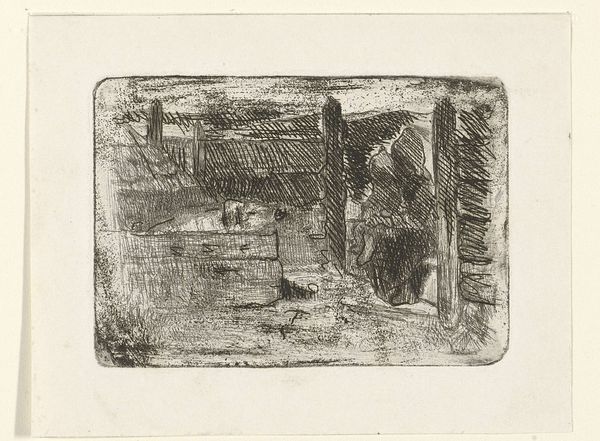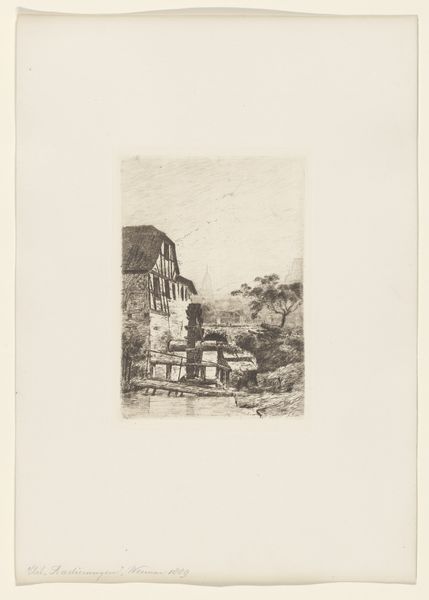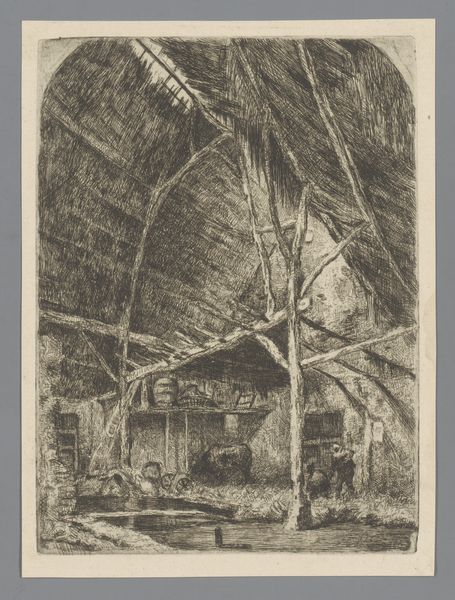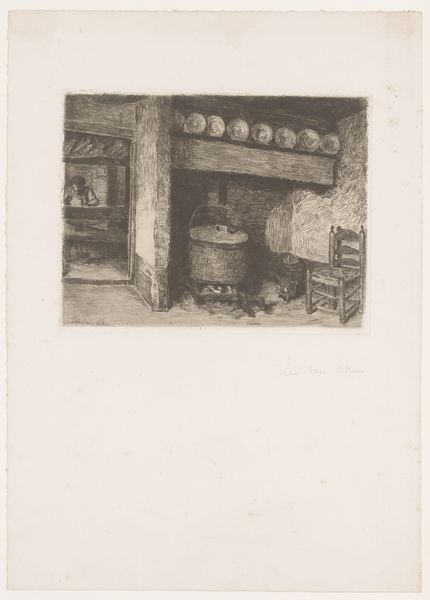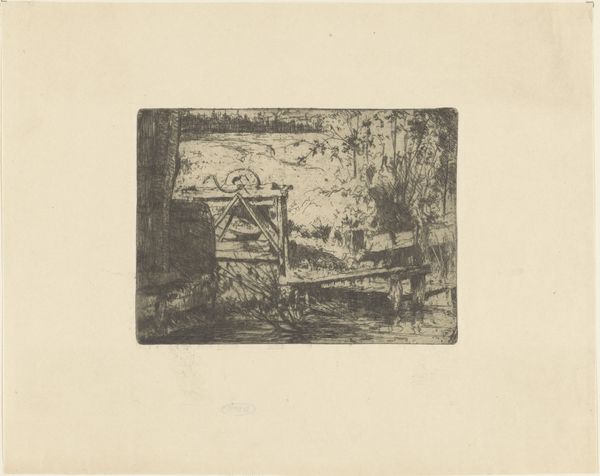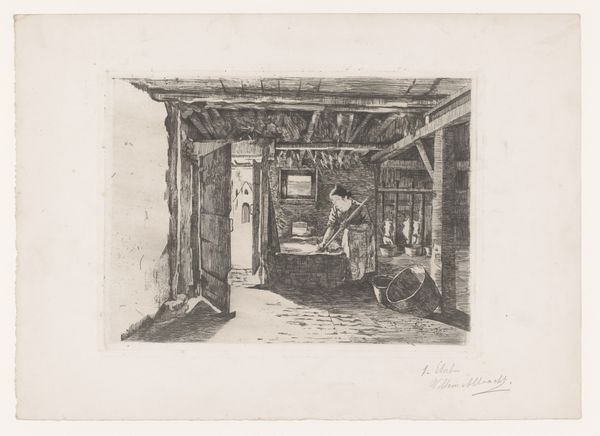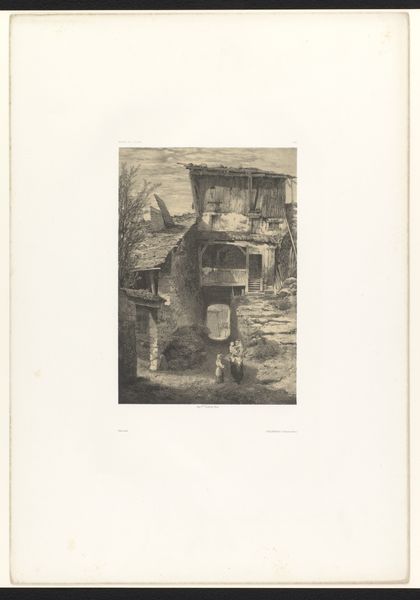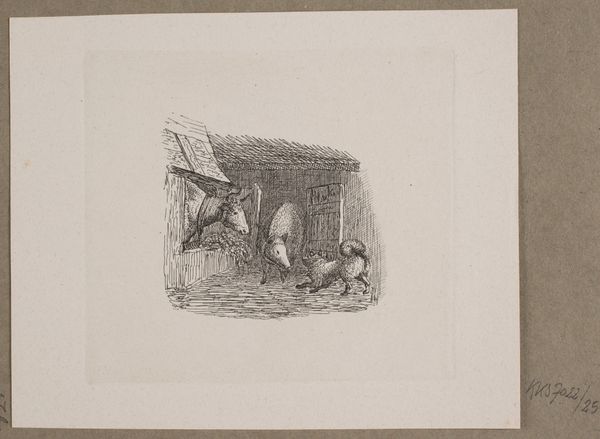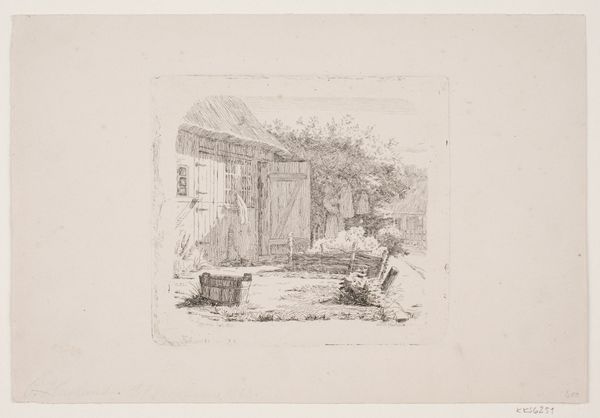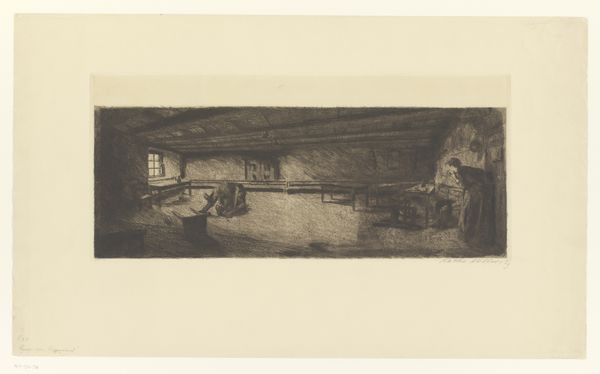
drawing, print, etching
#
drawing
#
dutch-golden-age
# print
#
etching
#
landscape
#
genre-painting
#
realism
Dimensions: height 145 mm, width 108 mm
Copyright: Rijks Museum: Open Domain
Curator: This etching, "Varkensstal," dating from 1882, offers a peek into the world as seen by Charles Mertens. My initial thought is how effectively the artist uses shadow. It feels claustrophobic, dim... almost furtive. Editor: It certainly evokes a sense of enclosure. But to me, the shadowed interior is also symbolic of a more significant point, a glimpse into the ordinary working spaces in 19th century Dutch society. The meticulous details about this genre painting, speak volumes about realism and the place for everyone at that period. Curator: True. The subject matter reflects an interest in Realism. But looking closer, I find this interior scene brimming with associations. Pigsties for millennia were a mark of life at a specific moment of development, symbolizing abundance, food security, perhaps a more natural relationship to sustenance. Editor: That's a persuasive point, and this realism carries considerable social significance. Art of the time often depicted elevated or historical subjects, yet Mertens chooses a farm structure. This focus on commonplace environments highlights a social change and a desire to represent the everyday experiences of individuals. Consider how the Industrial Revolution began to shift cultural focus too! Curator: Precisely! I can almost feel the rough-hewn texture of the wooden beams, smell the hay... He transforms a mundane interior into a compelling narrative, a symbol of rural existence in a time when modernity was quickly taking hold. There are few actual symbols depicted, apart from the familiar wooden structure. Editor: I'm struck by the absence of human figures as part of that equation. The bare interior, the dark enclosure, might represent a silent commentary on labor and marginalization; it is hard for me to interpret because I feel an incompleteness. It challenges traditional academic artwork criteria while also serving as a social critique on a larger cultural level. Curator: It does bring up broader discussions. The psychological resonance for many, I think, originates from what he keeps from the viewers and invites to their memory or culture, it is like looking back to ancestral rural living. I see something familiar in my unconsciousness when considering the subject itself. Editor: Definitely food for thought when trying to relate it all, seeing Mertens work against that backdrop and the wider art culture during the 1880's when class, the status quo and wealth began to be critiqued as important factors, and represented it on common subjects with different eyes. It speaks to both societal transitions and creative expressions of a modern era!
Comments
No comments
Be the first to comment and join the conversation on the ultimate creative platform.

